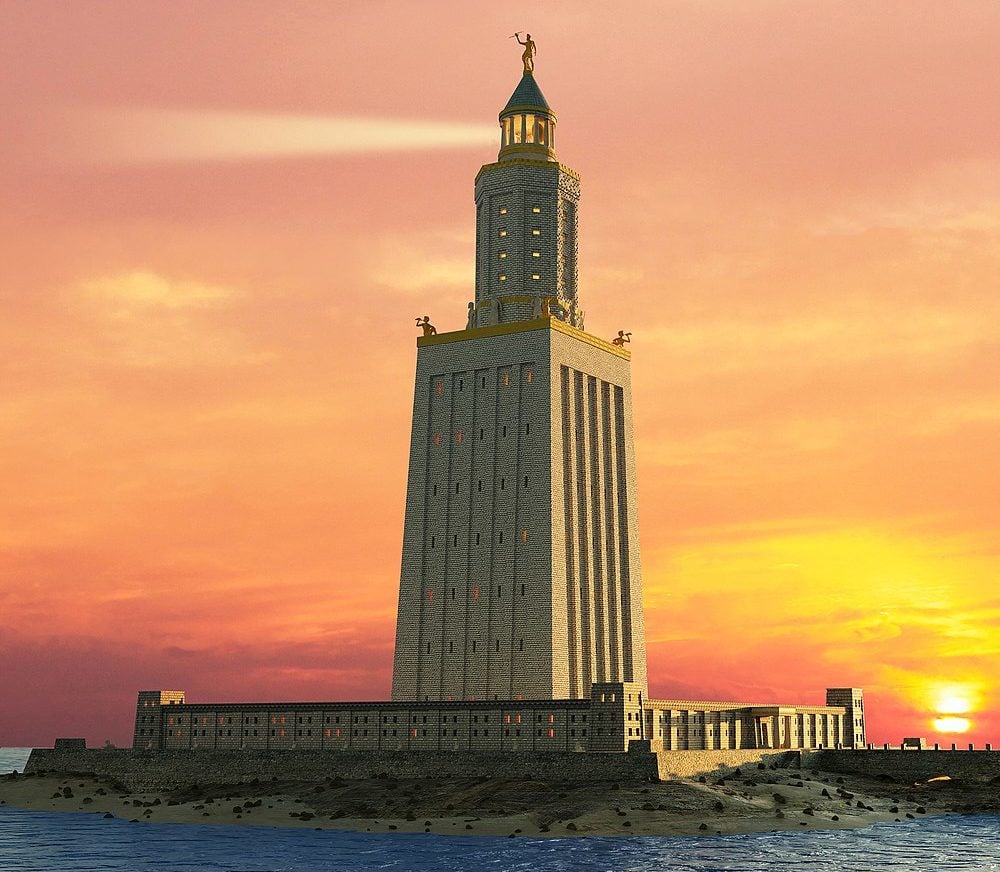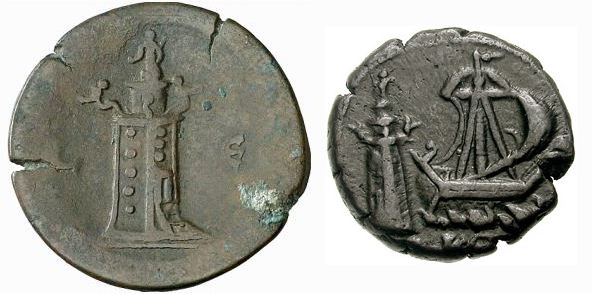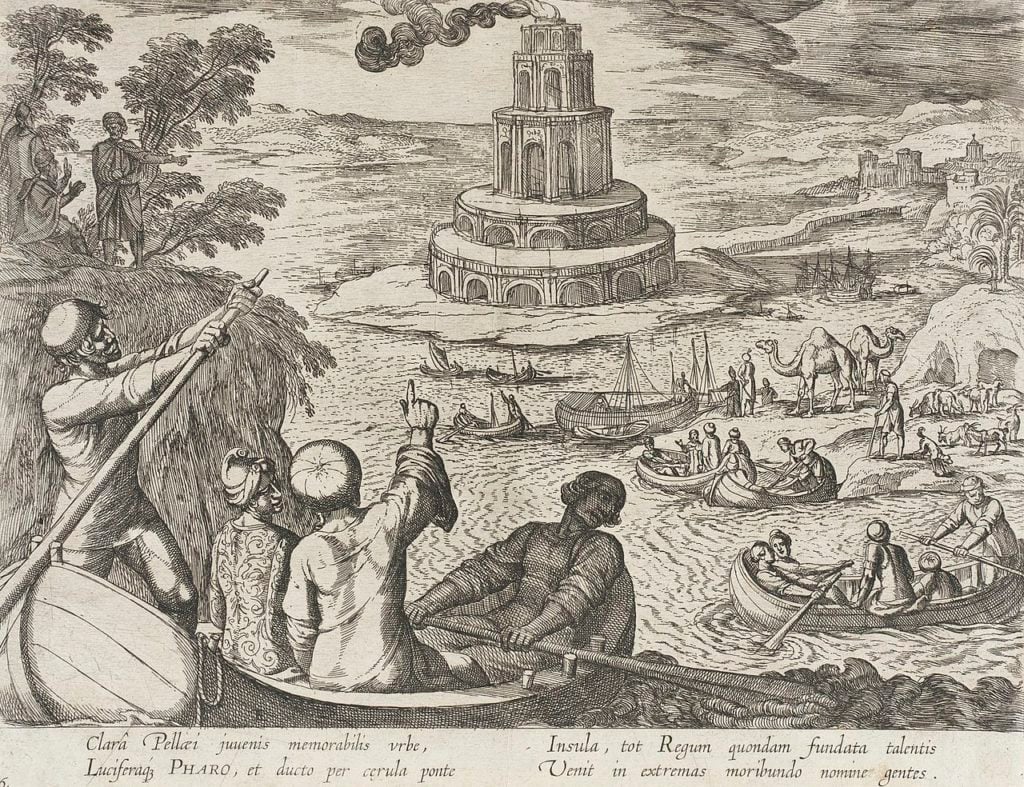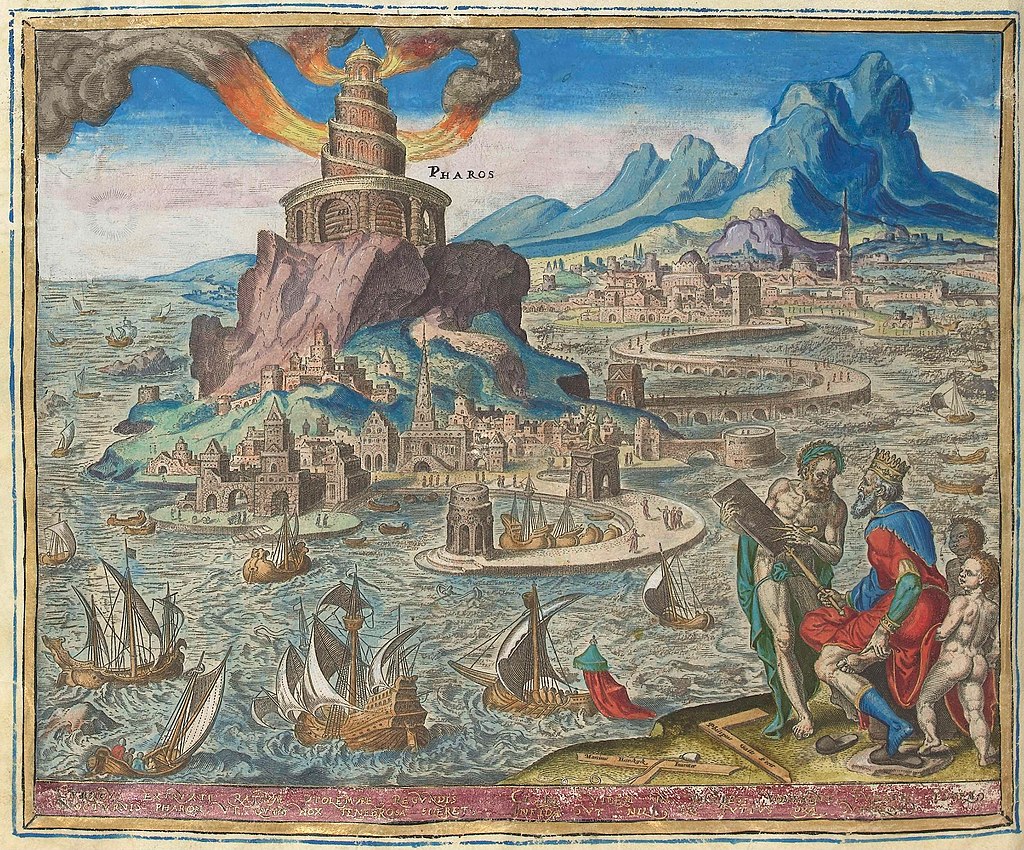
The Lighthouse of Alexandria, the last standing of the Seven Wonders of the Ancient World, was an engineering marvel that served to guide ships to the port city.
It was completed in the 3rd century BC during the reign of Ptolemy II Philadelphus, the son of Ptolemy I, the Macedonian Greek general of Alexander the Great, on the island of Pharos off the coast of the city of Alexandria in Egypt.
The Lighthouse of Alexandria was a beacon, safely guiding seamen sailing the Mediterranean to Egypt for fifteen centuries.
It was one of the greatest architectural feats of antiquity, serving as a symbol of power of the Ptolemaic Dynasty, the successors of Alexander the Great, who was the founder of the city of Alexandria.
An important landmark of the Hellenistic period, the Lighthouse of Alexandria had travelers from all over the world who were encouraged to visit the port city to admire the tower.
Design of an Architectural Wonder
The ambitious project was commissioned around 300 BC by Ptolemy I Soter. He was a general of Alexander the Great and the first Macedonian King of Egypt who reigned from 323 to 282 BC.
It took twenty years to complete the massive construction, and by the time it was ready, Ptolemy II Philadelphus was sitting on the throne as the second king of the Ptolemaic Dynasty in Egypt.
Ptolemy II completed the Lighthouse of Alexandria. Furthermore, he developed commerce, exercised skillful diplomacy, and made Alexandria a center of the arts and sciences.
According to Strabo, Greek architect and engineer Sostratus of Cnidus, a friend of Ptolemy, designed and constructed the lighthouse and presumably funded the works.
Pliny says that Sostratus was the architect and that Ptolemy graciously allowed him to “sign” the monument with: ”Sostratus of Dexiphanes the Cnidian to Savior Gods for the seafarers.”

Another source claims that Ptolemy forbid Sostratus from putting his name on his work. Nevertheless, the architect wrote an inscription on the walls of the base.
The inscription was hidden under a plaster layer, covered by another inscription in honor of Ptolemy. Centuries later, the layer was gone, and the name of the architect was revealed.
Construction of the Lighthouse of Alexandria
The lighthouse was constructed for practical purposes: It aided ships in safely detecting the Alexandria harbor. With two observation platforms, it also served as a military lookout for approaching enemy ships.
The lighthouse stood 110 meters high (350 feet). This would have made it the second tallest structure in antiquity after the pyramids of Giza.
Information on the structure of the Lighthouse of Alexandria comes from a German archaeologist, Hermann Thiersch, in his 1909 work Pharos, antike, Islam und Occident.
According to the ancient sources he consulted, the lighthouse was constructed with large blocks of light, colored stone and was built in three stages. The blocks all sloped slightly inward. The lowest was square; the second lowest was octagonal; and the top was cylindrical. A spiral ramp led to the top.
Near its summit, there were two beacons. At night, a great bonfire generated the light and, during the day, a great mirror, made with a concave disc of polished metal, reflected and directed the sun rays.
In entering the lighthouse, one would go up a long vaulted ramp from which a spiral staircase led up to numerous chambers, probably utilized by slaves for carrying fuel for the fire of the beacons.
According to ancient accounts, the lighthouse could be seen from up to thirty-five miles (fifty-six kilometers) away. Legend has it that the light of the beacons could burn enemy ships.
This would have been possible either with the use of prismatic lenses or by spraying fire from the top of the tower. However, it is rather unlikely.
Some texts mention a statue placed atop of the lighthouse. A poet named Poseidipos of Pella, who lived in Alexandria in the third century BC, wrote about a statue depicting Zeus. Zeus was accompanied by Poseidon.
Roman coins portray a huge statue of Alexander the Great placed at the top of the lighthouse. Four smaller statues, likely the son of Poseidon, Triton, were allegedly placed at the four corners of the building.

The Long History of the Lighthouse
During its first three centuries, the lighthouse was used mainly for practical purposes. By the first century AD, after the Romans took over, the lighthouse served primarily as a landmark or day beacon.
A severe tsunami hit the island of Pharos in 365, but the lighthouse withstood. However, earthquake tremors likely caused cracks on the structure.
Ancient sources say that, in 796, the Lighthouse of Alexandria lost its upper story due to earthquakes. The area appears to be seismogenic.
A century later, Sultan Tulun (868-884) built a domed mosque on the summit. By 950, several cracks began to appear in the walls of the tower.
In 1183, Muslim traveler Ibn Jubayr visited Alexandria and described the lighthouse thus: “Description of it falls short, the eyes fail to comprehend it, and words are inadequate, so vast is the spectacle”.
Two more severe earthquakes in 1303 and 1323 caused serious damage to the tower. According to Arab traveler Ibn Battuta, this time, one could not enter the lighthouse because of piles of debris.
Around 1375, the Lighthouse of Alexandria was destroyed completely by yet another earthquake.
In 1480, the remains of the lighthouse finally disappeared, since the Sultan of Egypt used several stones of the pharaohs to construct a fort.

Several stone blocks of the lighthouse can be seen in the walls of the Fort Qaitbay. The particular stone blocks are clearly visible because of their massive size in comparison to the other blocks of the walls.
In late 1994, a group of archaeologists from France, under Jean-Yves Empereur rediscovered the lighthouse’s physical ruins on the seabed of Alexandria’s Eastern Harbor.
With the collaboration of filmmaker Asma El Bakry, the very first underwater images of ruined columns and sculptures were noted.
The most important discoveries made by Empereur included slabs of granite weighing fifty to sixty tons and fragmented into many parts.
The legacy of the Lighthouse of Alexandria is immense. It stands as an architectural marvel and the blueprint of all lighthouses built ever since, serving as the symbol of the historical city of Egypt.
See all the latest news from Greece and the world at Greekreporter.com. Contact our newsroom to report an update or send your story, photos and videos. Follow GR on Google News and subscribe here to our daily email!



